Here is a samosa and cilantro chutney recipe. This should make about 8-11 samosas, though you might want to double the chutney recipe if you’re an avid dipper. Indians don’t really use too many exact measurements; so when I say things like “add water one cup at a time,” just use your best judgment based on how the food is looking. Remember, cooking isn’t always about following a recipe to the T. It’s about doing what feels right and making something that tastes good – so add more peas if you love peas or cut the salt if you’re watching your intake. Enjoy!
Last two recipes: Masala Chai and Pea Biryani
Next recipes: Butter Paneer and Chapati
Samosa recipe
Dough
200 grams fine wheat flour
½ tsp salt
1 tsp ground parsley seed
1 tbsp vegetable oil
Mix all ingredients with water, adding just a cup at a time until the mixture is doughy but not overwatery. Add more oil if it is not binding properly. Knead with your hands for about five minutes, then let the dough sit for 20 minutes while you make the filling.
Filling
1 tsp oil
1 tsp fennel seed
1 small red onion, finely chopped
1 handful peas
2 potatoes, boiled and peeled
½ tsp salt
¼ tsp turmeric powder
¼ tsp red chili powder
In a pan, heat oil and add fennel seed. Saute for 30 seconds, then add onion. Saute for 30 seconds, then add peas. After 30 seconds, slice potatoes and add them to the pan. Mix, then add salt, turmeric powder and red chili powder. Mix ingredients while breaking the potato into smaller pieces.
Now the filling is complete. Remove it from heat and let it cool. Add chopped cilantro on top if desired.
Creating a samosa
Break off a small ball of dough and place it on a hard floured surface. Roll it out with a rolling pin until it is very thin and about 7” in diameter. Continue adding flour to both sides as needed during rolling. Once circular, slice the circle in half.
Take one half and grab each corner. Fold the dough into a triangular cone (see photo). Hold it like an ice cream cone and scoop the filling into it. Dip your index finger into water and circle the rim with it. Pinch the top closed and add more water if it’s not sticking well. Make sure all parts of the samosa are properly and tightly sealed. The completed samosa should look like a triangle.
Cooking the samosa
Pour enough vegetable oil in a pot to deep fry the samosas. Place the heat on high. (The oil is hot enough if you drop a small piece of dough into the oil and it pops back to the top and sizzles.) When the oil is ready, slide the samosas into the oil. Cook until they are golden brown on both sides, flipping if necessary.
NOTE: You can also bake the samosas. Just spray oil on a cookie sheet and place them in the oven. We didn’t cook them in that manner, but I think you could put the oven on 400ºF and cook until golden brown on both sides. Ten minutes on each side might do the trick.
Cilantro Chutney Recipe
Puree the following ingredients and enjoy!
One bunch of cilantro leaves
One small Roma tomato
¼ tsp salt
¼ tsp red chili powder
½ tsp cumin seeds
½ of a green chili, optional or add more or less depending on how spicy you want it
My camera’s battery died about 5 minutes into our cooking class. Special thanks to Sam for letting me use your awesome photos!
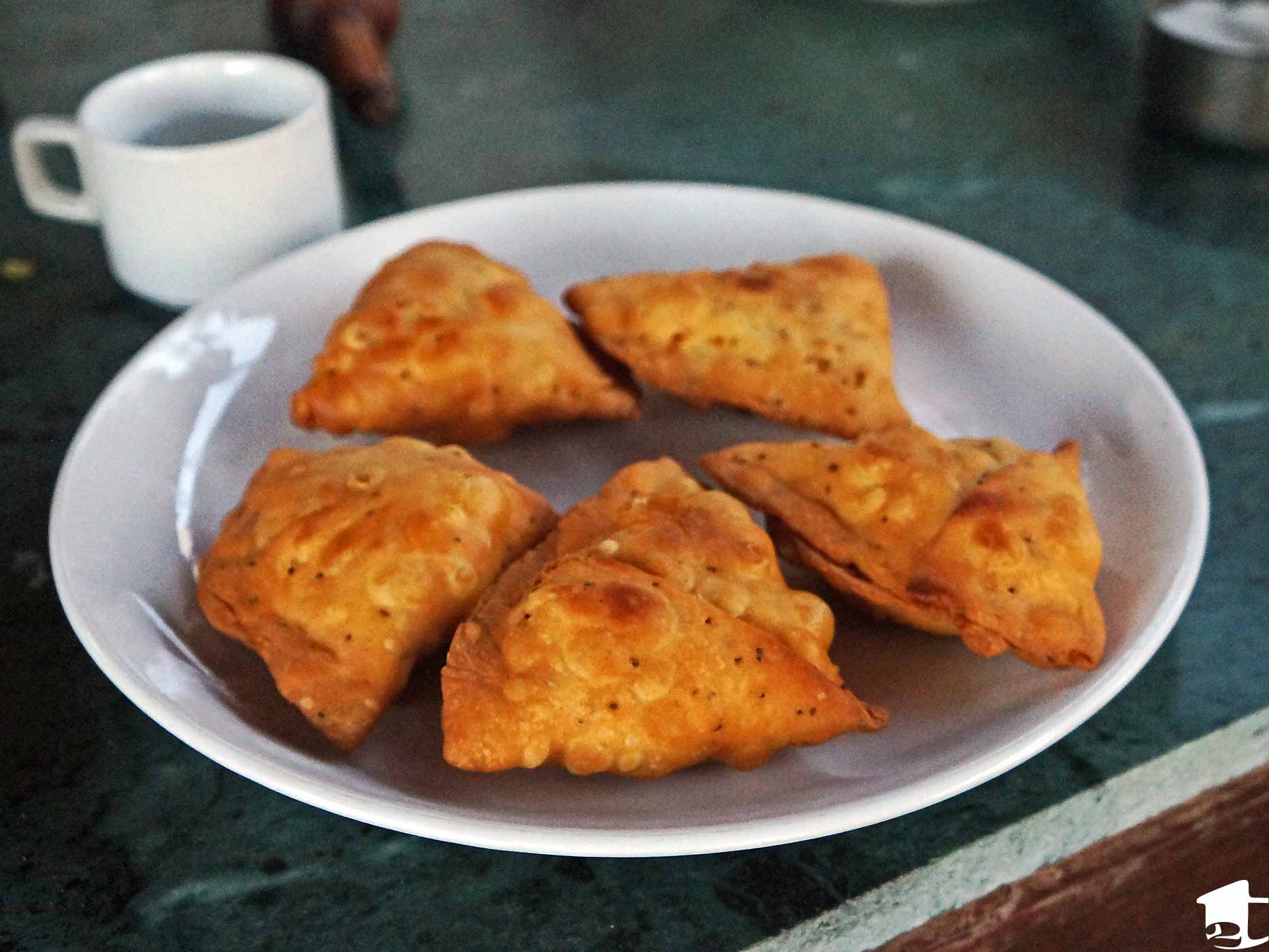
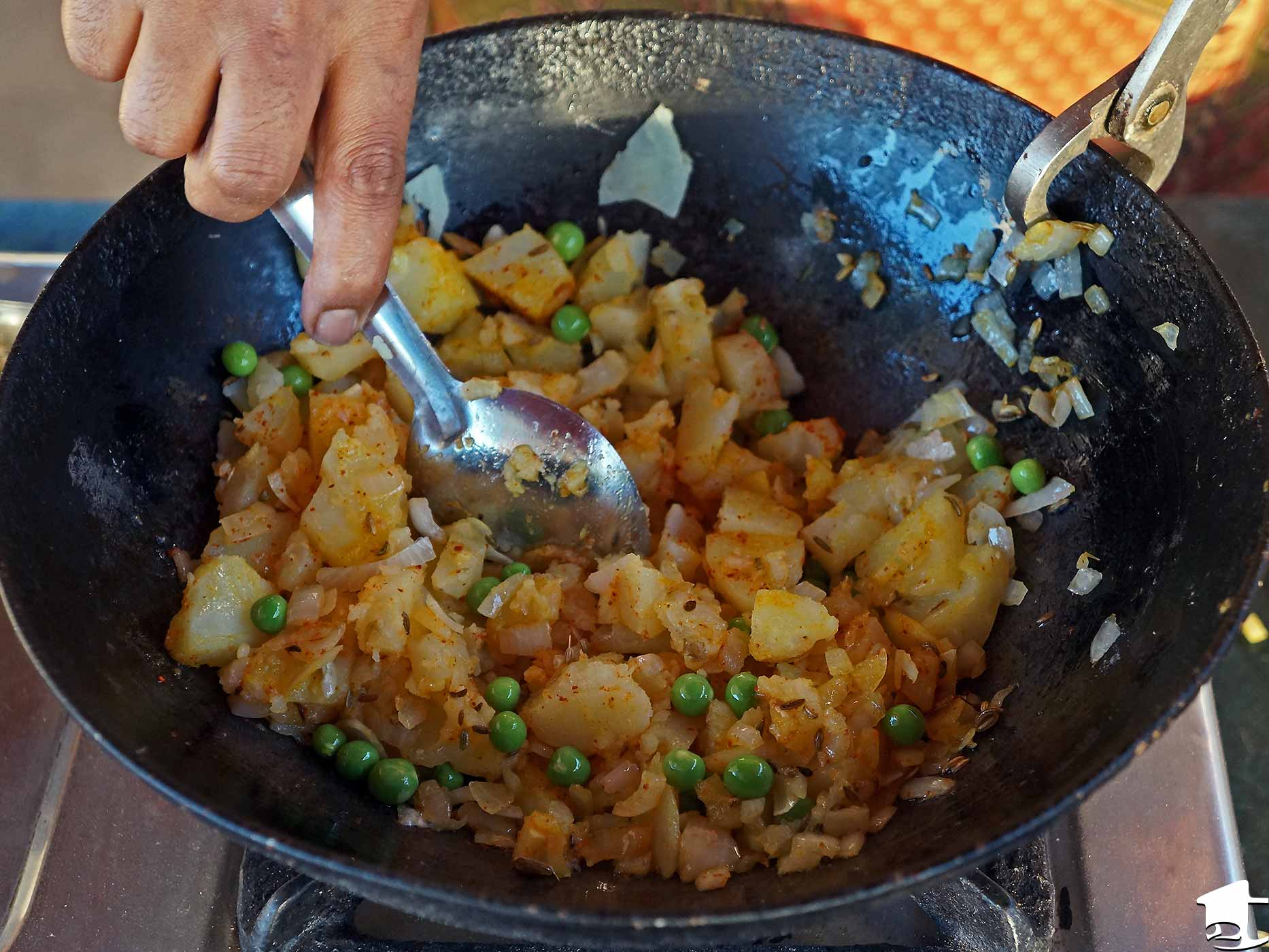
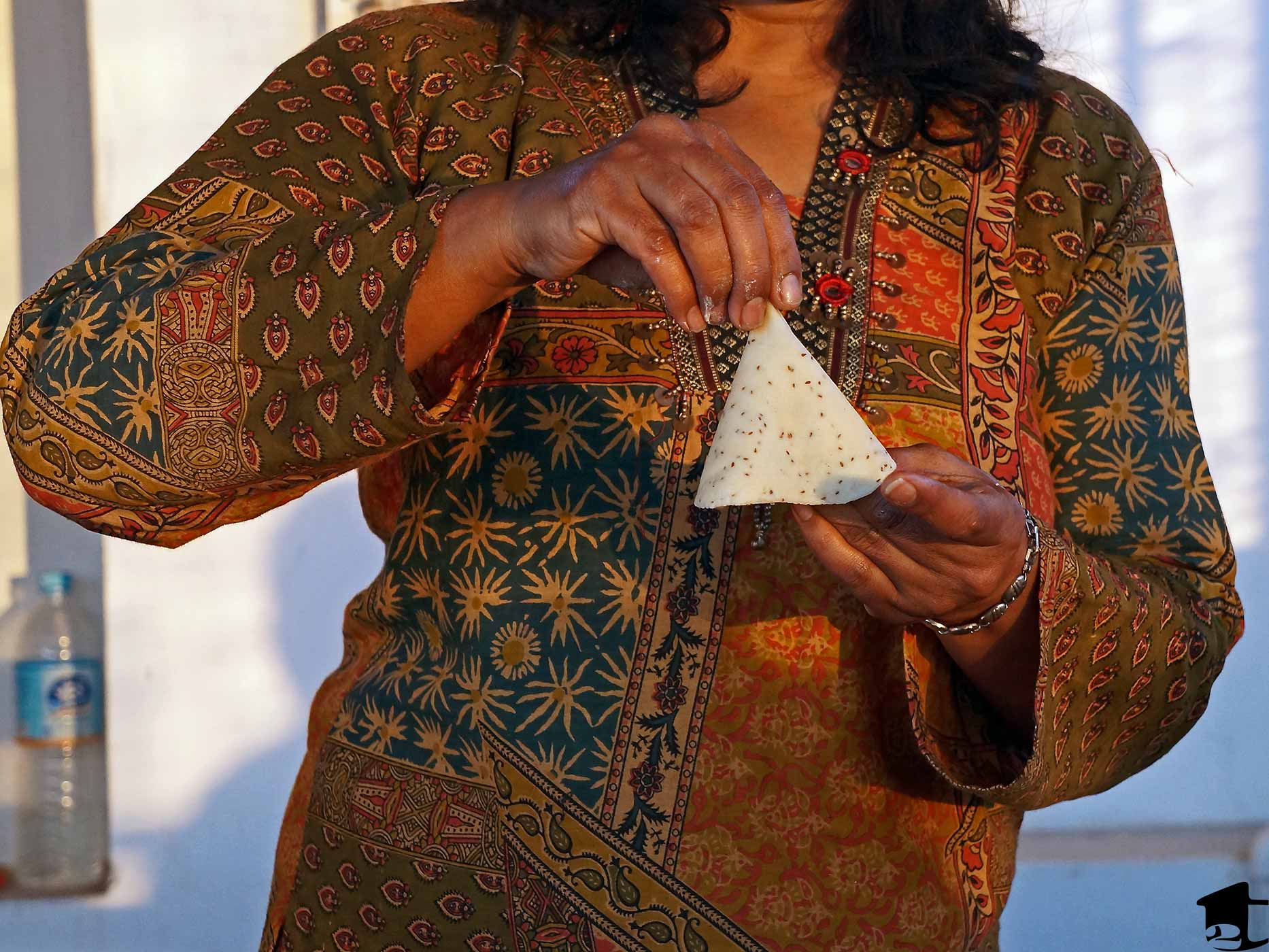
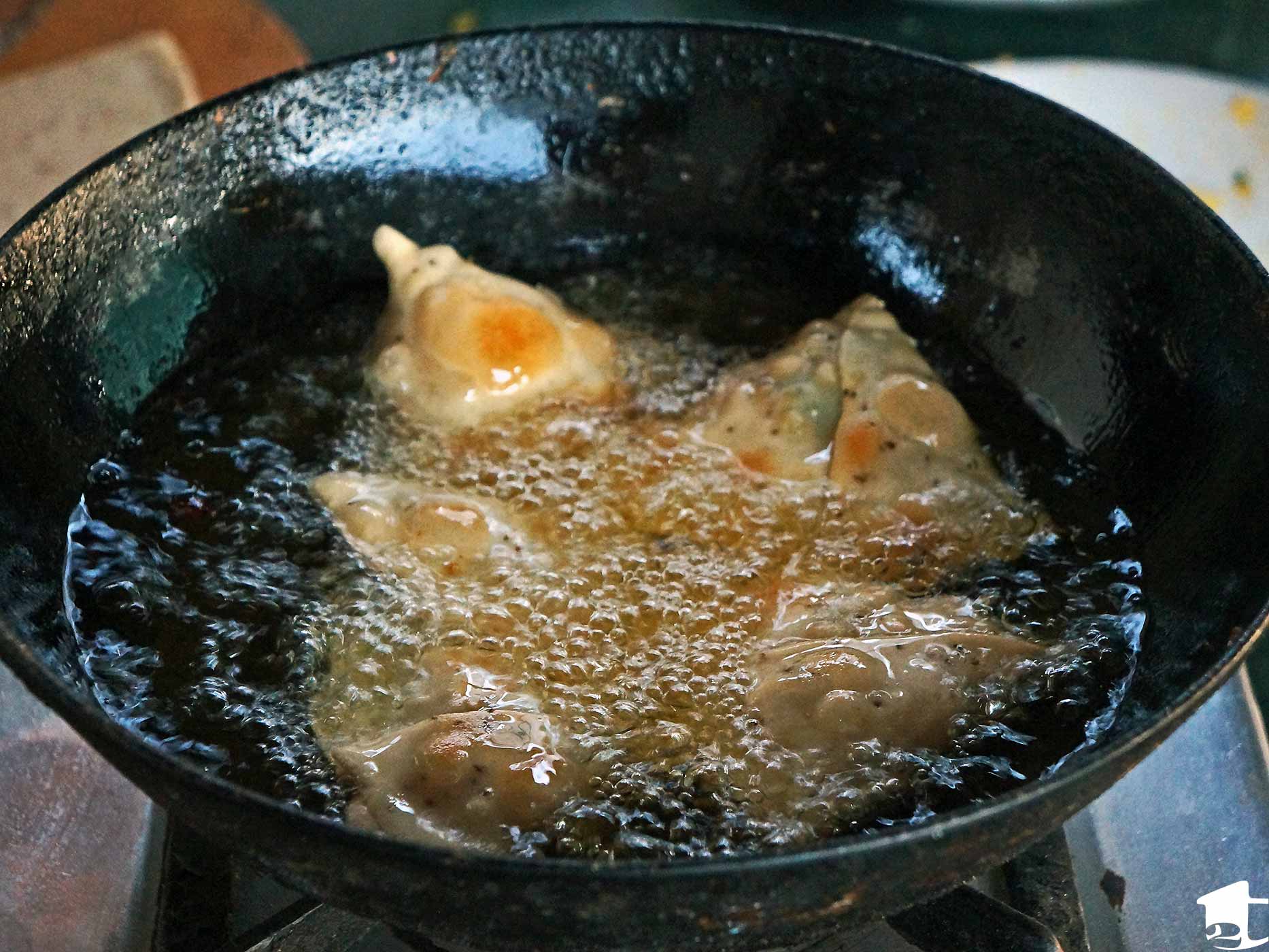
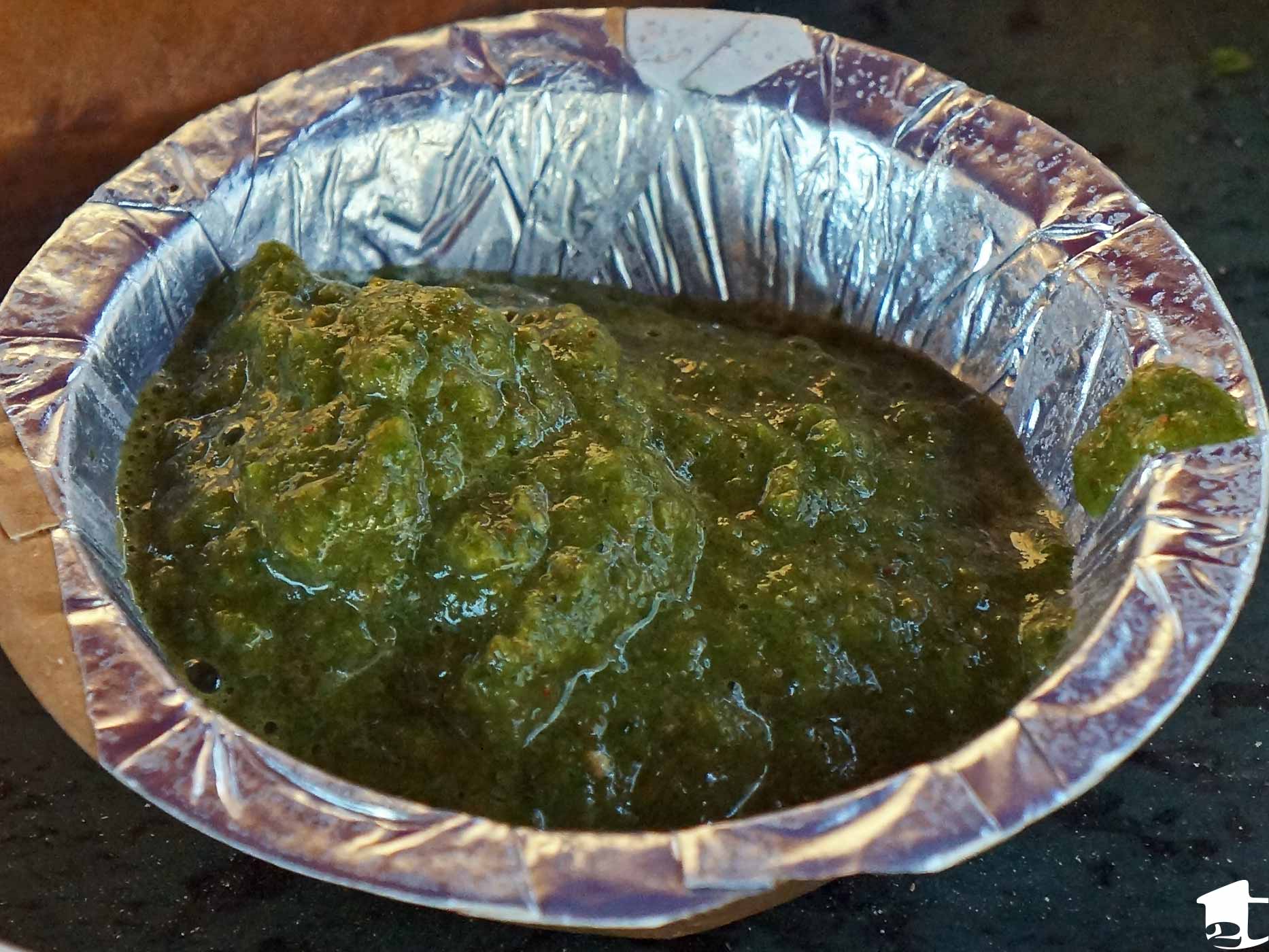












Thanks Tara for the recipe. We have been searching for perspectives about Indian food from travellers to India. This post give me one.
I like what you say ‘Cooking isn’t always about following a recipe’. Samosa is a dish you can experiment with. A different filling and a different samosa.
Glad to hear you enjoyed our perspective & the recipe/post! We love treating cooking like an art and experimenting as often as possible 🙂